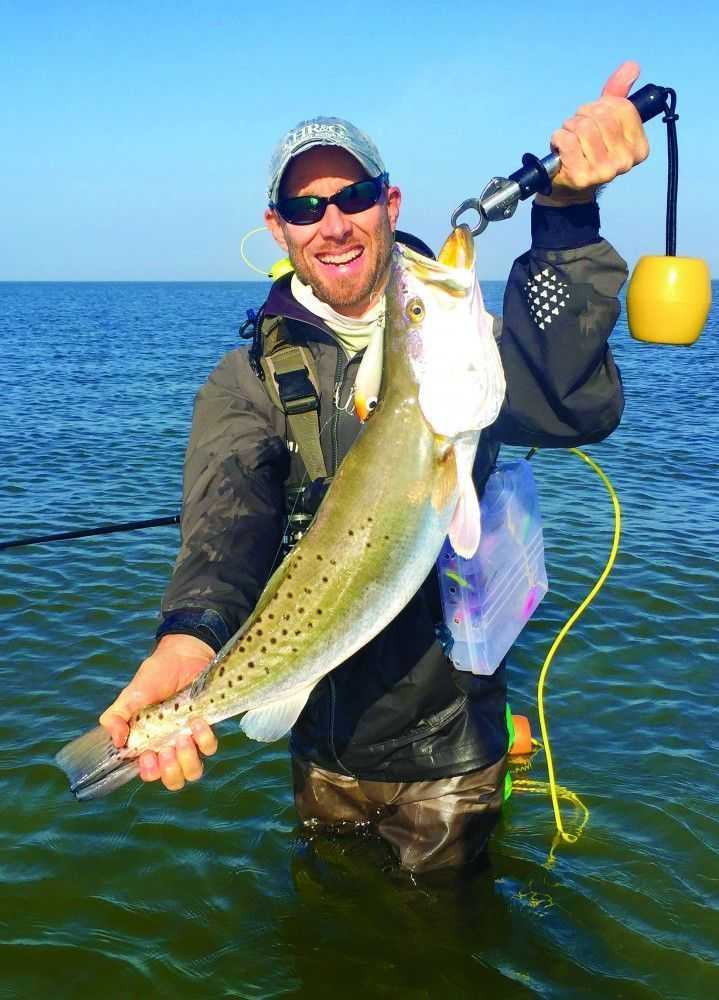By CAM Special Correspondent – Tobin Strickland:
February weather typically gives us a light at the end of the tunnel, with some warm sunny days toward the end of the month. However, the cold of February can be brutal with strong, cold winds that bite to your soul. It’s that variability that requires you to think on your feet and make solid fishing plans.
If the weather is brutally cold with strong north and northeast winds, the fish are going to seek shelter from the constant pounding that a brisk north wind causes. They’ll find this in two ways, protected shorelines, in depth, or a combination of the two. Their position will also be dictated by tide height. Some bay systems will empty faster with wind that pushes water out toward the passes, assisted by a pulling effect caused by that same wind pushing offshore water away from the beach. Still other bay systems may have higher than normal tides on a similar wind direction if that bay system is oriented where the wind will push against offshore currents or cause water to be stacked up inside itself. Different areas will have different wind and weather derived tide effects. In general, watch for dropping tides after a cold front to push fish deeper in search of refuge from winds.
On the other hand, a higher tide, with light post-frontal winds and moderate pressure change allows trout to stay put. We see this a good bit during the mild winters like this year’s. Also, between cold frontal passages, periods of warming air temperatures and mild onshore winds push good tide back into bay systems. This may put trout on the prowl up shallow fairly quickly. They’ll seek shallows accessible from nearby deep structure (something Capt. Walk Kalinowsky shared in our Big Trout DVD). Typically, these are mud-bottom areas, but could also be oyster, rock and even deteriorating grass mats. They are typically where some land feature causes a diversion to boat traffic as well.
Big trout are going to look for a larger baitfish to eat. Lures of choice are large slow-sinking twitch baits and larger soft plastics. In the slow-sink category the MirrOlure FatBoy, and the Broken Back from Steve’s Lures are good choices. You want to present a big offering to these fish that are looking to eat one big meal between cold fronts.
During a lull in the day’s bite, larger soft plastics are still going to do the heavy lifting. But don’t be scared to work the slow sinkers “low and slow.” You’ll still want a natural presentation, so it’s not dragging it across the bottom, but you are timing and counting down the lure after each twitch. Make it look like an injured or slowly dying baitfish. Allow it to touch the bottom occasionally, but keep it struggling.
Tobin created TroutSupport.com – Tech support from SpeckledTrout and redfish anglers and his products have literally tons of testimonials.
